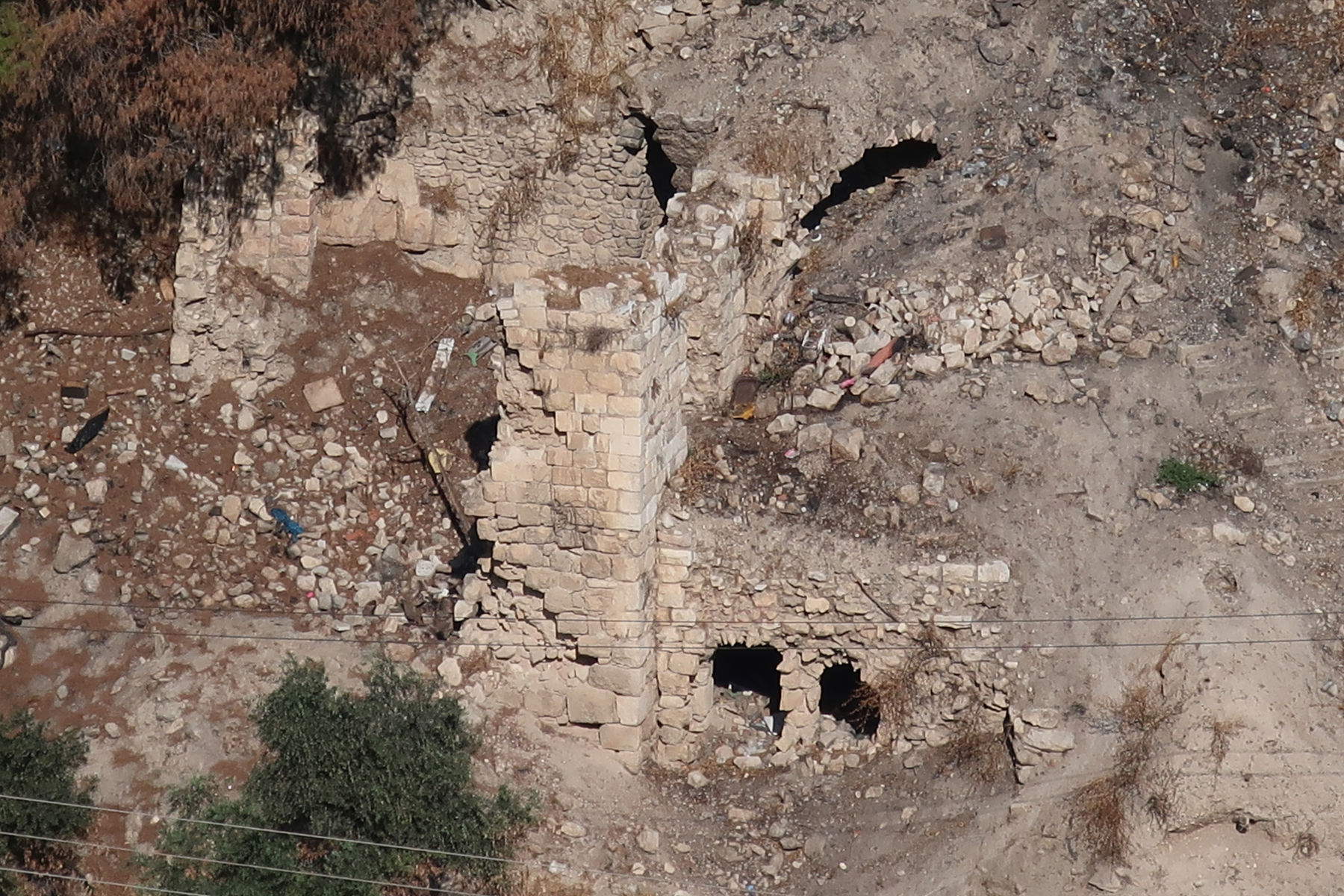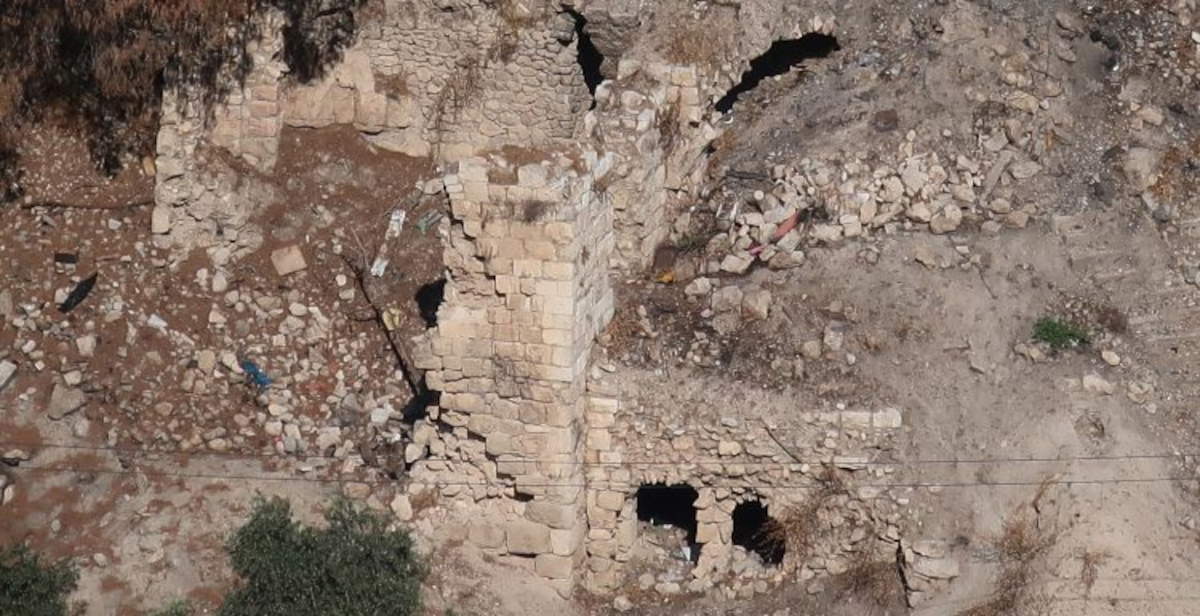Since October 7, 2023, the Gaza Strip has suffered unprecedented destruction of its religious and cultural heritage. According to the latest report of the United Nations Independent Commission of Inquiry on the Occupied Palestinian Territories(available here), at least 75 sites have been damaged, including churches, mosques, museums, monuments and archaeological sites. A figure compounded by a further World Bank estimate in February 2025 that 53 percent of the Strip’s cultural property is damaged or completely destroyed. Adding to these figures is the monitoring conducted by UNESCO, which as of May 27, 2025 has verified damage to 110 cultural sites as of October 7: 13 religious sites, 77 buildings of historical and/or artistic interest, 3 repositories of movable cultural property, 9 monuments, 1 museum, and 7 archaeological sites.
Major sites affected included the Anthedon Port, the Roman cemetery, the Pasha Palace (home to an archaeological museum), the Samaritan Bath, and the Omari Grand Mosque. The total damage was quantified at $120 million, while economic losses for the cultural sector were around $55 million. For comparison, damage from the 2014 conflict was estimated at $1.2 million, indicating a 100-fold escalation in the extent of destruction. Despite the presence of internal Israeli administration guidelines that suggested minimizing damage to archaeological sites and banning looting, the report documents suspicions of spoliation by Israeli military personnel at several sites, including the museum at theAl-Mat’haf hotel, that of Israa University, and from a warehouse belonging to the École Biblique et Archéologique Française in Jerusalem. In any case, the absence of tangible evidence makes it difficult to confirm such incidents.
Among the most serious attacks is that on the Greek Orthodox Church of St. Porphyry, which was hit on Oct. 19, 2023, by an explosion that killed 19 people, including eight children and five women, while some 450 evacuees had taken shelter there. The commission pointed out that the point of impact was only five meters from one of the church buildings, and speculated the use of an inaccurate device by Israeli forces. The Pasha Palace was hit twice in December 2023 by shelling and bulldozers, causing the destruction of most of the structure and artifacts. Similar fate for the Samaritan Bath, also demolished with the use of munitions and armored vehicles. In both cases, Israel mentioned the presence of military targets, but did not provide verifiable evidence. The attack on the 13th-century Omari Grand Mosque produced severe damage to the structure. Here, too, Israel claimed to have detected an underground tunnel traceable to Hamas, but presented no evidence. Another attack involved the Rashad al-Shawa Cultural Center in the Rimal neighborhood, which was bombed twice and then destroyed with bulldozers. It speculated that it was a “symbolic target,” struck for its identity value rather than for military purposes.

Two incidents resulted in a high number of civilian casualties: the bombing of the Ihya al-Sunna mosque on Nov. 15, 2023, during evening prayer killed 109 people; while the attack on the Saad al-Ghafari mosque at dawn on Aug. 10, 2024, left at least 90 people dead. In both cases, Israel justified the actions by claiming the presence of military facilities inside the religious buildings, but the report stresses the absence of objective evidence. The use of guided munitions, moreover, did not prevent a high number of civilian casualties. According to the commission, Israeli forces turned some cultural sites into military bases, such as the Al-Mat’haf hotel-museum, where the flag of Brigade 261 was hoisted. The nearby Al-Khaldi mosque complex is reported to have been completely destroyed. In none of these cases was a military justification provided.
Attacks or appropriations of religious sites have also occurred in the West Bank, including East Jerusalem. The Al-Ansar Mosque in Jenin was severely damaged by an air raid on October 22, 2023. There have been documented incidents of vandalism against mosques in the villages of Marda and Al-Mu’arrajat, where, in the latter case, the place of worship was set on fire. Added to this are seizures, excavations and the development of cultural sites, often for Jewish religious tourism, to the detriment of local communities. In May 2023, the Israeli government allocated 32 million new shekels (about $8.9 million) for the development of the archaeological site of Sabastiya, the ancient capital of the biblical Kingdom of Israel between the 8th and 9th centuries BCE. The area holds layered evidence spanning the Iron Age, Hellenistic, Roman, Byzantine, Crusader and Islamic periods.
The case of Silwan, in East Jerusalem, remains among the most emblematic. Here, the archaeological site of the “City of David,” recognized by experts as housing artifacts of numerous cultures from the past 7,000 years, has been expanded under the management of the settler organization Elad, with the support of Israeli authorities. In fact, again according to the Commission, the entire process has led to the expulsion of Palestinian families and the demolition of homes and community centers, without recognizing the Palestinians’ historical and cultural connection to the land. The Commission states that Israel uses cultural heritage as a tool to strengthen its territorial claims, favoring settlement continuity and reducing Palestinian access to historic places. The actions documented, from demolitions to excavations, from tourist conversions to legislative annexation, are in violation of international humanitarian law, the Hague Convention for the Protection of Cultural Property and numerous United Nations resolutions. Since 1967, Israeli authorities have conducted archaeological excavation activities in the West Bank through the Civil Administration’s archaeological officer. Most of these interventions were classified as “rescue excavations.” Subsequently, many sites were turned into tourist hubs, while the unearthed artifacts were transferred to Israel, where some were included in museum collections.
In January 2023, the management of archaeological sites in the West Bank passed from the Israeli military command, operating under the authority of the Minister of Defense, to the Ministry of Heritage. Subsequently, on July 10, 2024, the Knesset approved on first reading an amendment to the Antiquities Authority Law, opening up the possibility for the Israel Antiquities Authority to operate directly in the West Bank, thus replacing the archaeological officer in charge. In addition, the Commission recorded two incidents of attacks on cultural sites in Israel attributed to Palestinian armed groups, which occurred on October 7, 2023, and in the following days. The first involved an art gallery, which was allegedly set on fire and completely destroyed in Kibbutz Be’eri on Oct. 7. The second incident occurred on Oct. 23, when a rocket hit a museum located in kibbutz Yad Mordechai.
 |
| UN denounces destruction of Palestinian cultural heritage due to Israeli attacks |
Warning: the translation into English of the original Italian article was created using automatic tools. We undertake to review all articles, but we do not guarantee the total absence of inaccuracies in the translation due to the program. You can find the original by clicking on the ITA button. If you find any mistake,please contact us.